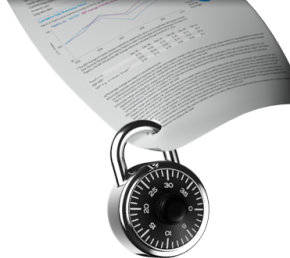
If it's not broke... don't fix it!
Consumers are losing literally millions a year because they're "Locked In".
Don’t update your Printer Firmware or it could cost you.
Manufacturers, such as Lexmark, HP, Brother and Canon use "Firmware" to control your printing supplies and options.
The printer manufacturers, Lexmark, HP, Brother and Canon are continuing to modify the "Firmware" (Firmware controls the functions of a printer's features) you use to prevent you from choosing the origin and type of the supplies you use. Don't permit them from dictating what you purchase and how much you pay.
Most Original Equipment Manufacturers (OEMs) suggest you to set your printer to download firmware updates and install them automatically.
We at Priceless Ink & Toner suggest you to change the setting disallowing automatic updates. This will allow you to use our high quality compatible and remanufactured printer supplies and reduce your printing costs. Otherwise you will only be able to use the original (OEM) printer cartridges.
Once the firmware has been updated it is not easy and also very time consuming to roll back to the older version that worked with the compatible and remanufactured printing cartridges.
After all if you're happy with how your device is performing, there is usually little point in rushing to install the newer firmware that could cause you hours of problems or even calls to an expensive helpline.
With these particular manufacturers, quite often, a new firmware upgrade can actually downgrade features and/or functionality. Specifically, firmware designed to limit or restrict the use of third party (aka aftermarket) consumables. That is fine, if you only use OEM brand printer cartridges in your device, firmware updates are unlikely to have any impact on you. However, if you prefer to have a choice and use third party compatibles or remanufactured ink and toner cartridges, it's probably best if you don't upgrade to any non-critical versions just yet.
We at Priceless Ink & Toner had many customers with a previously fully functioning printer contact us to say they suddenly can't use any of our third party cartridges which, they have been using with complete satisfaction for years. The reason almost always is caused by a recently installed printer firmware update.
Updates can be installed or prompted to an end user in several different and increasingly disguised ways. Usually in the form of a pop up dialogue box on your PC or message in your task bar, with details of a file to download and the change list of the file. Alternatively, you may have agreed to receive automatic updates when you ticked the relevant box during the initial installation of the printer software. Terms of Use and Conditions is something not many of us actually take time to read.
Recently HP have been asking customers to 'lock' their genuine cartridges to protect against theft. Once the cartridges are locked, they cannot be used in any other printer. This has a knock on effect when the empty cartridge is made available to a re-manufacturer, as the printer information remains locked to the cartridge preventing any future use in a different printer.
Read the information thoroughly before agreeing to any such update, as there will only be one person to blame, if you suddenly lose the ability to use that collection of cheaper print cartridges!
You will know if this has happened when you get constant messages similar to "Cartridges locked to another printer", "Cartridges failed" or "Cartridges cannot be recognized". You've probably just gone past the point of no return!
Finally, don't be confused between upgrading Printer Drivers and Printer Firmware...
Drivers are installed on your PC to help the Printer and PC to communicate. These can usually be updated and rolled back to a previous version and do not have any impact on what you can and can't use in your printer.
Firmware on the other hand, is installed directly to your printer and contains more permanent fixes and features. Manufacturers usually recommend the latest Firmware as it may provide significant enhancements to speed and functionality, although once installed, I'm afraid you're stuck with it until a newer version is released.
Call Priceless for accurate advise on new printers and which are cost effective for your needs.
Source: Why Not to Update Printer Firmware









